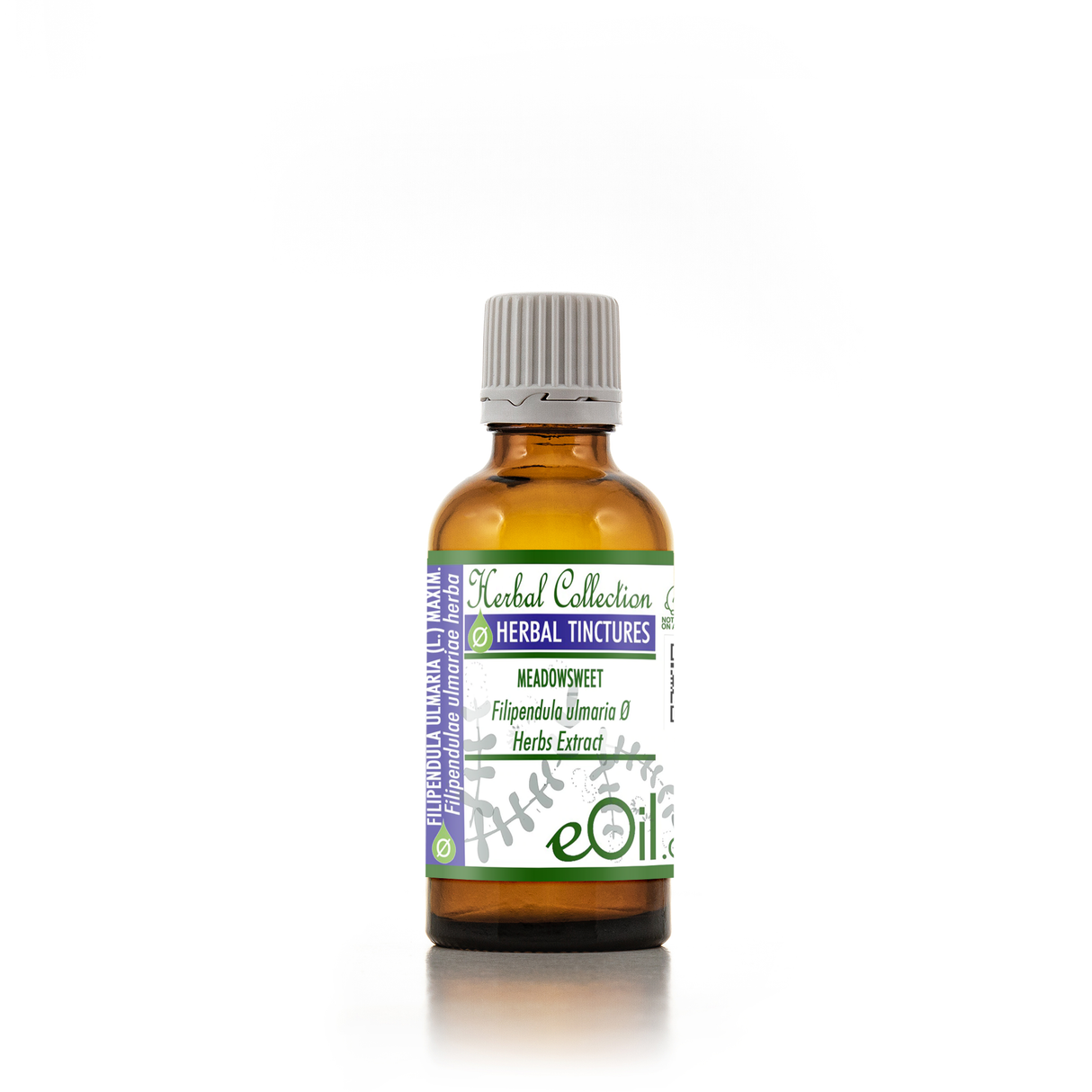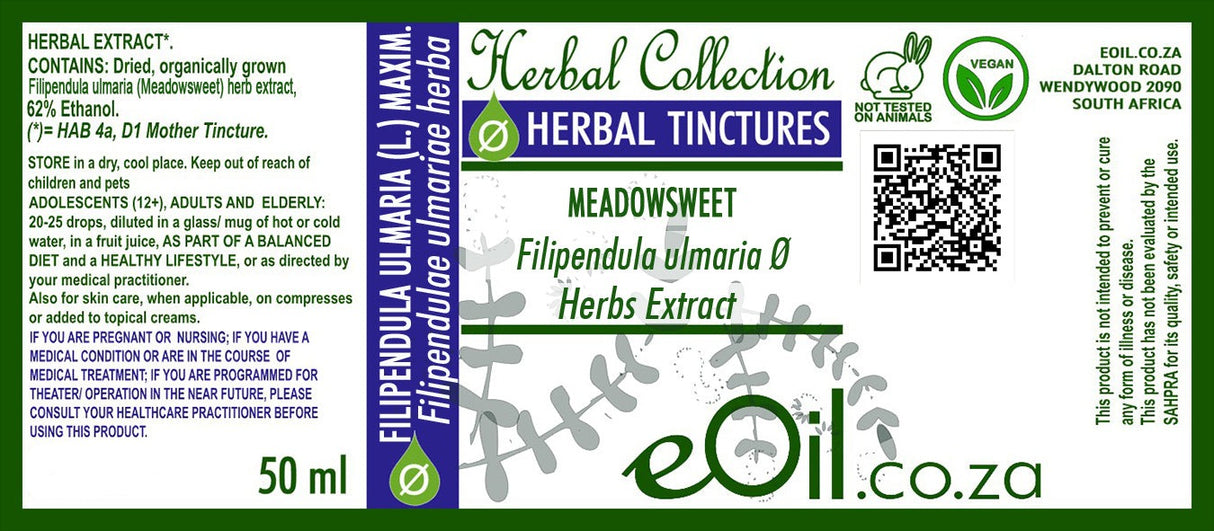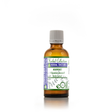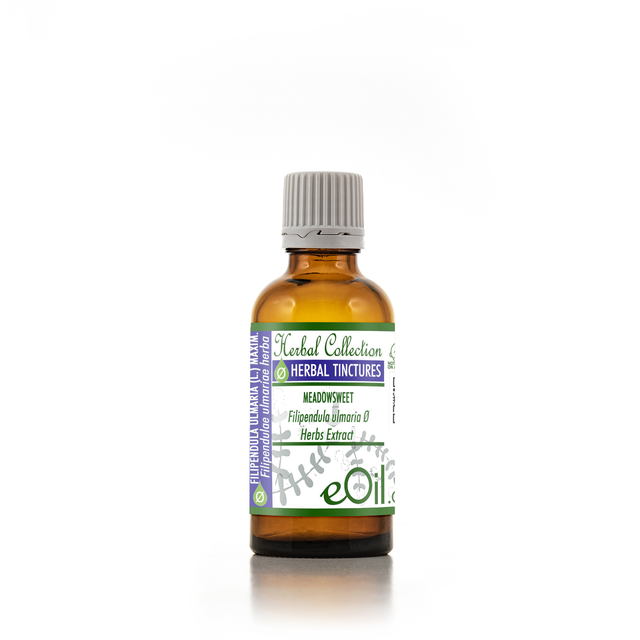Meadowsweet - Liquid Herbal Extract
Meadowsweet - Liquid Herbal Extract - 50 ML is backordered and will ship as soon as it is back in stock.
Description
Description
Understanding Mother Tinctures & Glycerines
Meadowsweet (Filipendula ulmaria) liquid herbal extract tincture is traditionally used to support digestive comfort, ease minor joint discomfort, and promote respiratory wellness.
Rich in natural salicylates, this plant-based tincture offers gentle anti-inflammatory benefits while being protective to the stomach lining.
Free from additives and suitable for daily wellness routines.
TRADITIONALLY USED FOR
Filipendula ulmaria, or meadowsweet, has been traditionally used in herbal medicine for centuries due to its various medicinal properties.
Some of its traditional uses, properties, and benefits include:
- Anti-inflammatory: Meadowsweet has natural anti-inflammatory properties attributed to its salicylates, flavonoids, and tannins. It has been traditionally used to treat inflammatory conditions such as arthritis, rheumatism, and muscle pain.
- Analgesic: Meadowsweet contains salicylic acid, a natural pain-reliever related to aspirin. It has been used to alleviate headaches, toothaches, and general pain.
- Antipyretic: The plant has been used as a natural remedy for reducing fever and managing symptoms of colds and flu.
- Digestive aid: Meadowsweet has been used to treat various digestive issues, including heartburn, indigestion, and stomach ulcers, due to its astringent, antacid, and soothing properties.
- Diuretic: Meadowsweet has diuretic properties, which can help promote urine production and excretion. This can be beneficial for relieving fluid retention and managing urinary tract infections.
- Respiratory support: The plant's mucilage content can help soothe irritated respiratory mucosa, making it a traditional remedy for coughs, bronchitis, and other respiratory ailments.
- Astringent: Tannins in meadowsweet give it astringent properties, which can help reduce inflammation and promote wound healing. It has been used topically for cuts, bruises, and skin irritations.
- Relaxant: Meadowsweet is believed to have calming and relaxing effects, making it useful in managing stress and anxiety.
meadowsweet, is a perennial herb that contains various biologically active compounds. Its main components include:
- Salicylates: Meadowsweet is a natural source of salicylates, which are compounds related to aspirin. The most prominent salicylate in meadowsweet is salicylic acid, which is known for its analgesic (pain-relieving) and anti-inflammatory properties.
- Flavonoids: These are a group of plant-based compounds with antioxidant properties. Key flavonoids found in meadowsweet include quercetin, kaempferol, and their glycosides.
- Tannins: Meadowsweet contains hydrolyzable tannins, which have astringent and anti-inflammatory properties. Tannins can help reduce inflammation and promote wound healing.
- Phenolic acids: Meadowsweet is rich in various phenolic acids, such as vanillic, ferulic, and p-coumaric acid, which possess antioxidant and anti-inflammatory properties.
- Volatile oils: Meadowsweet contains a small amount of volatile oils, which contribute to its characteristic aroma. The primary components of these oils are methyl salicylate, isomenthone, and eugenol.
- Polysaccharides: Polysaccharides are complex carbohydrates found in plants. Meadowsweet contains mucilage, a type of polysaccharide that has soothing properties and can help alleviate irritation and inflammation in the digestive and respiratory systems.
These components contribute to the various medicinal properties of meadowsweet, such as its anti-inflammatory, analgesic, and diuretic effects.
| Product Type | Main Benefits | Typical Use & Dosage | Best For | Not For |
|---|---|---|---|---|
| Tincture | Rapid pain, inflammation, & digestive relief | 2–4 ml in water, up to 3x/day | Headaches, fevers, | Pregnant/nursing, kids, aspirin allergy or asthma, |
| (max 12 ml/day) | joint pain, gastritis | anticoagulants, peptic ulcer disease | ||
| Dried Herb | Digestive tea, mild pain, anti-inflammatory | 1–2 tsp/cup, 3x/day (infusion) | Everyday gut/detox, | Same as above |
| compress/rinse | Topical baths/soaks | gentle immune support | ||
| Macerated Oil | Topical muscle, joint & skin comfort | Massage 1–3x/day over sore areas | Sore joints, athletes, | Aspirin allergy, broken skin/wounds |
| skin irritation | ||||
| Capsules | Internal pain, gut & immune wellness | 250–500 mg, up to 3x/day (max 1,500 mg) | Busy lifestyles, pain | Pregnant/nursing, children under 12, aspirin allergy, |
| on the go | asthma, blood thinners |
INFORMATION
Source : http://www.wikiphyto.org/wiki/Epine-vinette
Reference on http://www.wikiphyto.org
Translation in English by Google Translate (go to the page of the source linked | on Chrome cellphones go on the 3 dots on the top right and select translate in your preferred language | on laptop right click your mouse and select option translate when hoovering on the page
plant name
Meadowsweet, Spirea ulmaire , Bee flower , Goat's beard , Ulmaire , meadowsweet (English)
International Latin denomination
Filipendula ulmaria (L.) Maxim. (Spiraea ulmaria)
botanical family
Rosaceae
Description and habitat
- Herbaceous plant of humid places, tall, with large leaves divided into toothed and unequal leaflets, the terminal one being larger. The flowers are white, fragrant, very numerous, arranged in compound clusters, with a characteristic smell of methyl salicylate . The fruit is dry.
- Meadowsweet is very common in France and throughout Europe except the Mediterranean coast, in Western and Northern Asia, in North America.
- bee plant
History and tradition
- It was once used as a vulgaris, sudorific, astringent, diuretic (Cazin), tonic, recommended against dropsy and rheumatic disorders.
Parts used
- Flowering tops
Dosage forms available
- Flowering tops herbal teas
- Powder
- Dry extract
- Mother tincture of flowering tops (65% ethanol content, minimum 0.20% total flavonoids, expressed as spiraeoside )
- EPS of flowering tops
Usual dosages
- 5 to 10 grams of infusion
Composition
Main components of the plant
- Low-quantity essential oil
- Simple phenolic glycosides such as monotropitoside and spiraein (primeverosides of salicylate derivatives)
- Flavonoïdes [1] : spiraéoside 3 à 4% [2] = quercétol-4'-glucoside, quercétol-3-galactoside, kaempférol-3-glucoside, rutoside, hyperoside, quercétine-4′-O-β-galactopyranoside, isoquercitrine
- Ellagitanins (10 to 20% of the drug) contributing to the astringent flavor ( tellimagrandin I and II, rugosine A, B, E) [3]
- Drying conditions are important for the preservation of phenolic derivatives [4]
Main components of buds or young shoots
Main components of essential oil
Properties
Plant properties
- Antirheumatic by the presence of glycosides such as monotropitoside (whose aglycone is methyl salicylate )
- Anti-inflammatory [6] , [7] , reduction of IL-6 and TNF-α ( apigenin , quercetin ) [8] , inhibition of COX-1 and COX-2 cyclo-oxygenase [9] , analgesic [10] , active in gout
- Antibacterial [11]
- Uricosuric diuretic
- Diaphoretic in colds
- Antitumoral
- Immunomodulating (roots, leaves, flowers), inhibits the production of reactive oxygen species by leukocytes ( tannins ) [12] , [13]
- Acts on dysplasia of the cervix [14]
- Anticoagulant activity (molecular complex with heparin-like activity, neutralized by protamine sulfate, heparin antagonist) [15]
- Inhibition of elastase [16]
- Anti-ulcer [17]
- Root extracts inhibit the spread of Echo 9 virus , it acts as an interferon inducer
- Antioxidant (related species, Filipendula hexapetala ) [18]
Bud properties
Properties of essential oil
Indications
Indications of the whole plant (phytotherapy)
- Rheumatism aggravated by humidity
- Drops
- Fevers
- Headaches, dental pain
- Facilitation of elimination functions
Indications of the bud (gemmotherapy)
Specific indications of essential oil (aromatherapy)
Known or suspected mode of action
- Upon drying and storage, glycosides such as monotropitoside and spiraeoside release salicylic aldehyde (75% of the essential oil ), methyl salicylate , alcohols
- The role of gut microbiota is important for intestinal absorption via urolithins [19]
Usual formulations
- Infusion of flowering tops: three tablespoons (a good handful) for a liter of boiling water, infuse 1/4 hour (do not boil). Drink during the day, space out after improvement
Regulations
- French Pharmacopoeia list A (flower, flowering top)
Possible side effects and precautions for use
- Very few adverse effects have been identified [20]
- Gastralgia sometimes
- Methyl salicylate is regularly the cause of poisoning whose symptomatology is that of salicylate poisoning: 1 ml of methyl salicylate is equivalent to 1.4 g of acetylsalicylic acid (aspirin) and the quantities ingested are sometimes greater than 10 ml [2]
- Caution in case of co-administration of antiaggregants and anticoagulants
- Potential interactions with warfarin [21]
- Contraindication with heparin and derivatives
- Avoid if allergic to aspirin
- Symptoms of overdose [3]
- Neurological disorders
- Hyperpnée
- Hyperthermia
- Digestive disorders
- Dehydration
- Functional renal failure
- What to do [4]
Bibliographic references
- Go↑ Pemp E, Reznicek G, Krenn L. Fast quantification of flavonoids in Filipendulae ulmariae flos by HPLC/ESI-MS using a nonporous stationary phase. Journal of Analytical Chemistry, July 2007, Volume 62, Issue 7, pp 669–673
- Go↑ Poukens-Renwart, P., Tits, M., Wauters, J. N., & Angenot, L.. Densitometric evaluation of spiraeoside after derivatization in flowers of Filipendula ulmaria (L.) Maxim. Journal of pharmaceutical and biomedical analysis, (1992), 10(10), 1085-1088.
- Go↑ Fecka I. Qualitative and quantitative determination of hydrolysable tannins and other polyphenols in herbal products from meadowsweet and dog rose. Phytochem Anal. 2009 May-Jun;20(3):177-90. doi: 10.1002/pca.1113. PMID 19291675
- Go↑ Niamh Harbourne, Eunice Marete, Jean Christophe Jacquier, Dolores O'Riordan. Effect of drying methods on the phenolic constituents of meadowsweet (Filipendula ulmaria) and willow (Salix alba). LWT - Food Science and Technology, Volume 42, Issue 9, November 2009, Pages 1468–1473
- Go↑ Kruglova Maria Yuryevna, Hanina Minisa Abdullaevna, Makarova Daria Leonidovna, Domrachev Dmitry Vasilievich Study of the essential oil of the aerial part of Filipendula ulmaria (L.) Maxim // Journal of Siberian Medical Sciences. 2011. No5. URL: https://cyberleninka.ru/article/n/issledovanie-efirnogo-masla-iz-nadzemnoy-chasti-filipendula-ulmaria-l-maxim (accessed on 05.23.2020).
- Go↑ Trouillas P, Calliste CA, Allais DP, Simon A, Marfak A, Delage C, Duroux JL. Antioxidant, anti-inflammatory and antiproliferative properties of sixteen water plant extracts used in the Limousin countryside as herbal teas. Food Chemistry, Volume 80, Issue 3, March 2003, Pages 399-407 [1]
- Go↑ Ruxanda Bodîrlău, Iuliana Spiridon, Carmen Alice Teacă, Narcis Anghel, Maria Ichim, Svetlana Colceru, Alice Armatu. Anti-inflammatory constituents from different plant species. Environmental Engineering and Management Journal, July / August 2009, Vol.8, No.4, 785-792 full text
- Go↑ Drummond EM, Harbourne N, Marete E, Martyn D, Jacquier J, O'Riordan D, Gibney ER. Inhibition of proinflammatory biomarkers in THP1 macrophages by polyphenols derived from chamomile, meadowsweet and willow bark. Phytother Res. 2013 Apr;27(4):588-94. doi: 10.1002/ptr.4753. PMID 22711544
- Go↑ Katanić J, Boroja T, Mihailović V, Nikles S, Pan SP, Rosić G, Selaković D, Joksimović J, Mitrović S, Bauer R. In vitro and in vivo assessment of meadowsweet (Filipendula ulmaria) as an anti-inflammatory agent. J Ethnopharmacol. 2016 Dec 4; 193: 627-636. doi: 10.1016 / j.jep.2016.10.015. PMID 27721054
- Go↑ Samardžić S, Tomić M, Pecikoza U, Stepanović-Petrović R, Maksimović Z. Antihyperalgesic activity of Filipendula ulmaria (L.) Maxim. and Filipendula vulgaris Moench in a rat model of inflammation. J Ethnopharmacol. 2016 Dec 4; 193: 652-656. doi: 10.1016 / j.jep.2016.10.024. PMID 27725238
- Go↑ Jussi-Pekka Rauha, Susanna Remes, Marina Heinonen, Anu Hopia, Marja Kähkönen, Tytti Kujala, Kalevi Pihlaja, Heikki Vuorela, Pia Vuorela. Antimicrobial effects of Finnish plant extracts containing flavonoids and other phenolic compounds. International Journal of Food Microbiology, Volume 56, Issue 1, 25 May 2000, Pages 3-12
- Go↑ Halkes SBA, Beukelman CJ, Kroes BH, Van Den Berg A.JJ, Labadie RP, Van Dijk H. In vitro immunomodulatory activity of Filipendula ulmaria. Phytotherapy research, 1997, vol. 11, no7, pp. 518-520 (15 ref.) INIST-CNRS
- Go↑ Raphael Richard Ciuman. Phytotherapeutic and naturopathic adjuvant therapies in otorhinolaryngology. Eur Arch Otorhinolaryngol. 2012 February; 269(2): 389–397. Published online 2011 September 16. doi: 10.1007/s00405-011-1755-zhttp:// texte intégral
- Go↑ Peresun'ko AP, Bespalov VG, Limarenko AI, Aleksandrov VA. Clinico-experimental study of using plant preparations from the flowers of Filipendula ulmaria (L.) Maxim for the treatment of precancerous changes and prevention of uterine cervical cancer. Vopr Onkol. 1993;39(7-12):291-5. PMID 7825300
- Go↑ Kudriashov BA, Liapina LA, Azieva LD. The content of a heparin-like anticoagulant in the flowers of the meadowsweet (Filipendula ulmaria). Farmakol Toksikol. 1990 Jul-Aug;53(4):39-41. PMID 2226759
- Go↑ Lamaison JL, Carnat A, Petitjean-Freyet C. Tannin content and elastase inhibiting activity in the Rosaceae family. French pharmaceutical annals, 1990, vol. 48, no.6, pp. 335-340 (6 pages) INIST-CNRS
- Go↑ Barnaulov OD, Denisenko PP. Anti-ulcer action of a decoction of the flowers of the dropwort, Filipendula ulmaria (L.) Maxim. Farmakol Toksikol. 1980 Nov-Dec;43(6):700-5. PMID 7450008
- Go↑ Katanic J, Mihailovic V, Stankovic N, et al. Dropwort (Filipendula hexapetala Gilib.): potential role as antioxidant and antimicrobial agent. EXCLI Journal. 2015;14:1-20. doi:10.17179/excli2014-479. texte intégral
- Go↑ Piwowarski JP, Granica S, Zwierzyńska M, Stefańska J, Schopohl P, Melzig MF, Kiss AK. Role of human gut microbiota metabolism in the anti-inflammatory effect of traditionally used ellagitannin-rich plant materials. J Ethnopharmacol. 2014 Aug 8;155(1):801-9. doi: 10.1016/j.jep.2014.06.032. PMID 24969824
- Go↑ Restani P, Di Lorenzo C, Garcia-Alvarez A, et al. Adverse Effects of Plant Food Supplements Self-Reported by Consumers in the PlantLIBRA Survey Involving Six European Countries. Nerurkar PV, ed. PLoS ONE. 2016;11(2):e0150089. doi:10.1371/journal.pone.0150089. texte intégral
- Go↑ Heck AM, DeWitt BA, Lukes AL. Potential interactions between alternative therapies and warfarin. Am J Health Syst Pharm. 2000 Jul 1;57(13):1221-7; quiz 1228-30. PMID 10902065
- Bruneton J. Pharmacognosy, Phytochemistry, Medicinal Plants. Ed. Tec and Doc. 1997.
- Wichtl Max, Anton Robert. Therapeutic plants: Tradition, officinal practice, science and therapy. Ed. Tec & Doc. Cachan. 1999.
- Phytotherapy Review No. 20
- Nesterova IuV, Povet'eva TN, Aksinenko SG, Suslov NI, Gaĭdamovich NN, Nagorniak IuG, Popova EV, Kravtsova SS, Andreeva TI. Evaluation of anti-inflammatory activity of extracts from Siberian plants. Vestn Ross Akad Med Nauk. 2009;(11):30-4. PMID 20017405
- Halkes SBA. Filipendula ulmaria - A study on the immunomodulatory activity of extracts and constituents. PhD Thesis, University of Utrecht 1998
- EMEA Bibliographic References http://www.ema.europa.eu/docs/en_GB/document_library/Herbal_-_List_of_references_supporting_the_assessment_report/2011/01/WC500101407.pdf
CAUTION
Store in a cool, dry place, away from light. Keep tightly closed, away from the reach of Children and pets.
Do not exceed the daily dose.
This product is not intended to prevent or cure any form of illness or disease.
If you are pregnant or nursing ; If you have a medical condition or are in the course of medical treatment ; If you are programmed for theater/operation in the near future, please consult your healthcare practitioner before using this product.
This product cannot replace a varied and balanced diet and a healthy lifestyle.
This product has not been evaluated by the SAHPRA for its quality, safety or intended use.





